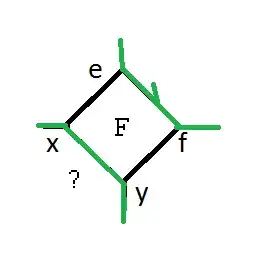Assume a planar graph with a Hamilton cycle (depicted in green).
$\hskip2in$
There are two possiblities for the displayed vertices to show up al0ng the Hamilton cycle:
- $\dots ef\dots xy\dots$
- $\dots ef\dots yx\dots$
What does it mean for the square $F$, if it's $xy$ or $yx$? Does this mean that it's inside or outside the Hamilton cycle? Does Grinberg's Theorem play a role here?